Storage planning considerations
The most important thing when arranging a pantry in an apartment or a private house is to decide what things it will be intended for, and correlate the load with the dimensions of the room.
- For a small pantry, several rows of shelves are suitable, located one above the other. At the bottom, it is better to leave space for boxes and boxes: this way the area will be used optimally.
- The dimensions of the compartments must be made in accordance with the dimensions of the items that will be removed to the pantry.
- If the room has a high ceiling, it is worthwhile to provide a place for a stool or a step-ladder: it will be more convenient to get things from the upper shelves.
- Some pantries have enough free space to make deep shelves. This is not always convenient, in addition, you should leave a distance for the passage and introduction of objects.
Preparation
Before installing storage systems, the pantry must be repaired: clean the space, carry out dry and wet cleaning, remove old wallpaper and flooring. If necessary, the walls of the pantry or attic are leveled and also put in order: painted or pasted over.
It is recommended to use a primer that contains antifungal impregnations.
Laminate, parquet or linoleum is laid on the floor. It is also worth equipping the pantry with ventilation and lighting, which will greatly facilitate the use of the room.
What material can you use?
One of the most affordable and durable materials for creating shelves in a pantry is wood. Planks made of natural wood (pine, larch), as well as laminated chipboard, are fixed on metal fasteners. The heavier the items that will be stored in the pantry, the thicker the boards should be. For conservation, large equipment, construction tools and other heavy things, an additional stiffener should be provided.
If you make shelves in the pantry with your own hands, you can also use what is at hand - wooden pallets, old unnecessary furniture, plastic boxes for fruit. Plywood is considered a budget option, but thin sheets are not suitable for heavy objects. Lightweight yet durable plastic is suitable for storing books, clothes and bulk goods. It is easy to care for, besides, the material is not afraid of moisture.
Metal racks are considered the most durable and do not require additional reinforcement. Modern products have a collapsible design, they are easy to rearrange and transport, moreover, the material can easily withstand temperature extremes. When buying, you should pay attention to the coating - it must be protected from corrosion with a special compound.
In the photo, shelves, drawers and wall shelves for a spacious pantry.
What is the best way to arrange the shelves in the closet?
The placement of the shelves is primarily affected by the size of the utility room.
- A small pantry (about 2 meters) allows you to install shelves only in one row - linearly, along one wall. Sometimes the structures are made rounded - this shape allows you to gain a few centimeters and use three walls.
- The corner arrangement in the form of the letter "L" is considered much more practical, but the area of the pantry should exceed 2 meters. For maneuvers, you need to leave a small passage, especially if the room is elongated and narrow.
- In a large utility room, it is optimal to place shelves in the shape of the letter "P". In this case, it is necessary to calculate the depth of the structures so that there is room for movement in the middle.
In the photo there is a pantry in which the racks are functionally arranged in the shape of the letter "P".
Determine the size
The most popular and practical form of shelves is straight. The length of the shelf is usually equal to the length of the wall. If the distance between opposite walls is 2 meters or less, then the shelf does not need additional support. Otherwise, the structure should be strengthened, especially if it is planned to store seals and tools.
The thicker the wood shelf, the more fasteners it requires. Also, its strength is determined by the distance between the support posts: the more massive the structure, the smaller the gaps.
To use the shelves conveniently and safely, the heaviest items must be stowed down. The width of the projections should decrease from bottom to top. The standard shelf width for cans with conservation is 30 cm. The height depends on the size of things.
In the photo there is a pantry with a wide aisle between wooden shelves.
DIY shelf options: step-by-step instructions
You can save a family budget with the help of homemade shelves in the pantry and detailed master classes, which are given below.
How to make a wood rack for a pantry?
Before starting work, it is necessary to measure the walls of the pantry and create a drawing of the desired design. Next, prepare in advance the consumables necessary for the manufacture of functional shelves.
In the photo there is a linear homemade shelving made of wood that occupies the entire wall of the pantry.
Tools and materials
For work you will need:
- Planed bar for a vertical rack (8 pcs, about 2 m).
- A bar for horizontal supports (12 pcs, about 50 cm, depending on the depth of the rack).
- Boards or lining for shelves (the number depends on the depth of the shelves, the length depends on the length of the wall).
- 16 metal corner fasteners (corners).
- 45 screws (3.5x25).
- About 70 thin studs.
- Wood impregnation and brush.
- Building level.
- Roulette.
- A hammer.
- Jigsaw.
- Screwdriver.
Step-by-step instruction
- First you need to prepare the material. Using a hacksaw or jigsaw, we cut the bars and lining in accordance with the dimensions of the future storage rack.
- We apply impregnation, carefully processing every detail. It takes as long to dry as indicated in the instructions on the can.
- We fix the corners with screws at the level where the shelves will be located:
- We fix the horizontal bars as follows (there should be 4 such structures):
- We install the lining horizontally, nail it down with thin nails:
- We make the second shelf in the same way: we fasten the corners, fix the horizontal bars, attach the lining.
- We lay the upper horizontal bars, fasten them.
-
The shelves in the pantry are ready. In this way, you can make a rack of any height, depth and shape.
You can learn more about how to make shelves in the pantry in this video:
DIY wall shelves
The following is the easiest and most economical way to make wall shelves in a small pantry. The amount of material for the shelves depends on the size of the room and the "number of storeys".
In the photo there is a pantry in small apartments such as Khrushchev or Leningrad, equipped with simple shelves.
Tools and materials
To make shelves in the pantry with your own hands, you will need:
- Sliced bars.
- Plywood, chipboard, boards or the remains of old furniture.
- Self-tapping screws for fastening.
- Screwdriver.
- Thin nails.
- A hammer.
- Level.
- Jigsaw or hacksaw.
Step-by-step instruction
- We cut bars and plywood according to the area of the pantry. If desired, they can be painted or varnished. For the frame of one shelf, you will need 1 long and 2 short bars, for the base - a plywood sheet or boards of the required size and thickness. We make markings on the walls and fasten the bars securely.
- We make the markup for the next shelf.
- We mount the shelf in the pantry.
- We fix it with nails.
And this video tells about installing a wall shelf in a pantry in two ways: on brackets for chipboard and on standard brackets.
Shelves in the pantry from the profile
A solid U-shaped shelving unit for a spacious pantry is obtained from metal profiles. Having understood the principle of operation, you can make shelves of any configuration, replace plywood with wood, paint the metal profile with paint and create a loft-style shelving unit.
In the photo there are two types of pantry shelves, created by hand from metal profiles and wood.
Tools and materials
- Guide profiles 50x40.
- Guide profiles 50x50.
- Plywood or wood planks.
- Roulette.
- Building level.
- Metal scissors.
- Jigsaw.
- Screwdriver.
- Dowel-nails.
- Self-tapping screws.
- Ladder.
Step-by-step instruction
- We make a drawing and calculate the amount of materials. We cut the profile into components in accordance with the dimensions.
- Mark out the horizontal lines. We fasten the guide profiles 50x40 to the walls using dowel-nails.
- We make the frame of the first shelf, put it on temporary supports from the profile.
- We cut a sheet of plywood with a jigsaw:
- We fix the finished parts with self-tapping screws.
- We replace temporary racks with guides. Shelves on the walls in the pantry are ready.
This video clearly shows how to make your own shelves in the pantry from a profile:
Photo gallery
Other options for shelves in the pantry can be found in the photo selection below.

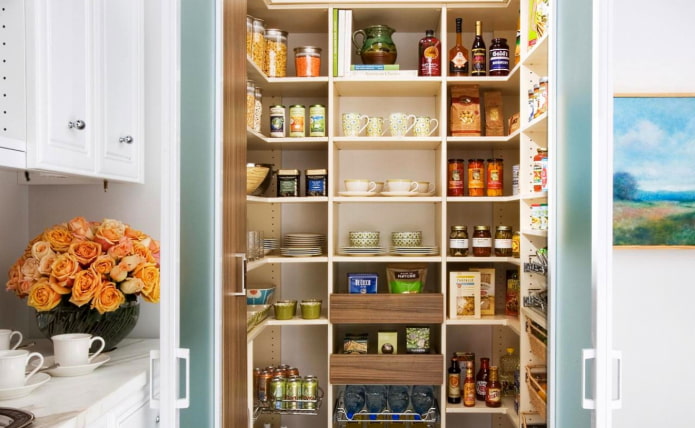
 10 practical tips for arranging a small kitchen in the country
10 practical tips for arranging a small kitchen in the country
 12 simple ideas for a small garden that will make it visually spacious
12 simple ideas for a small garden that will make it visually spacious
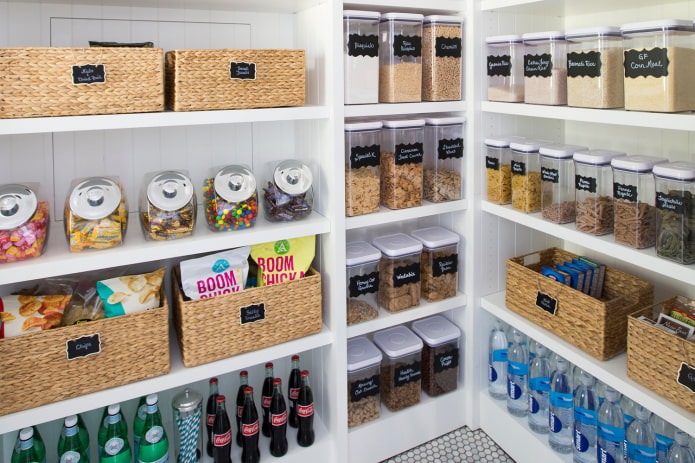
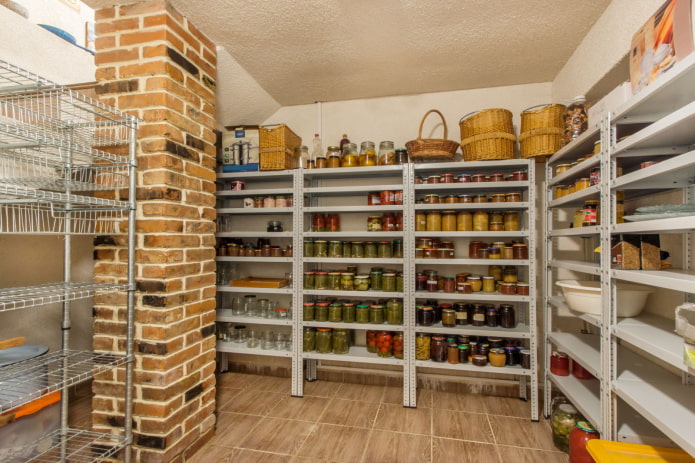
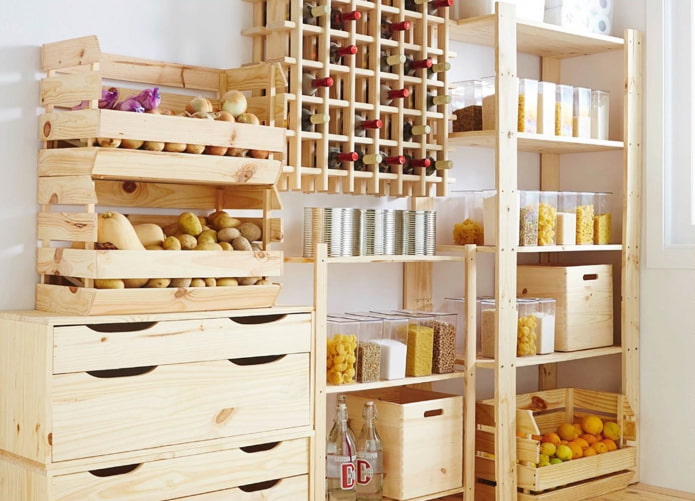
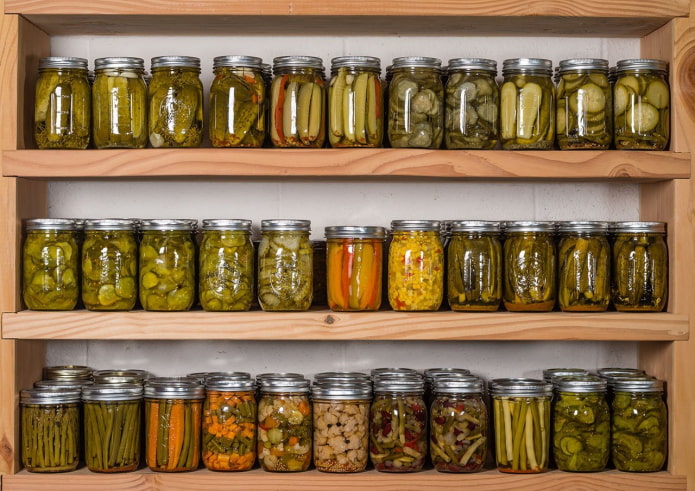
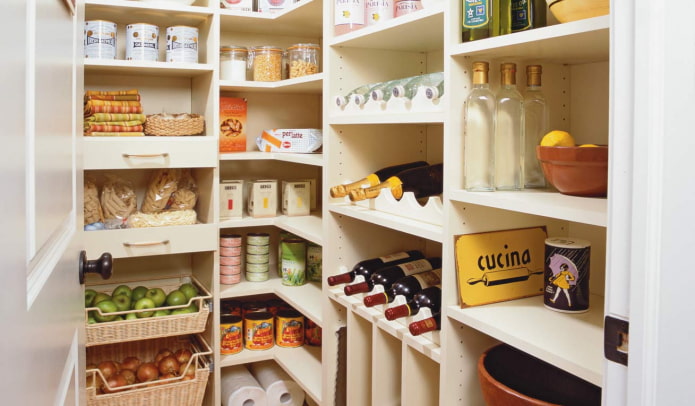
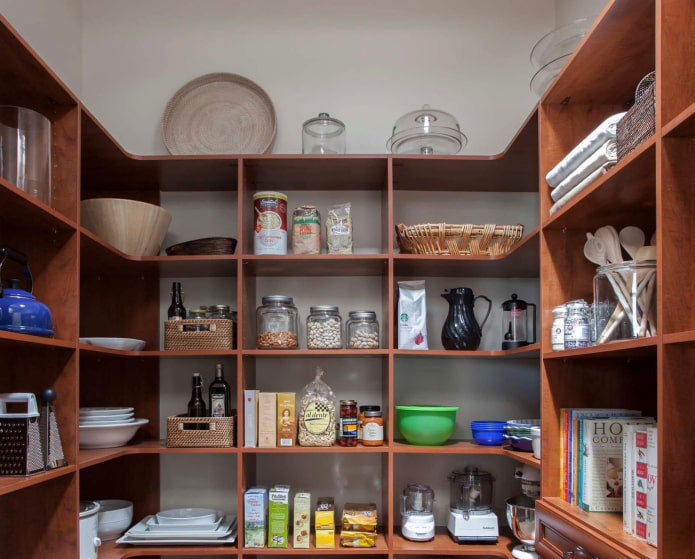
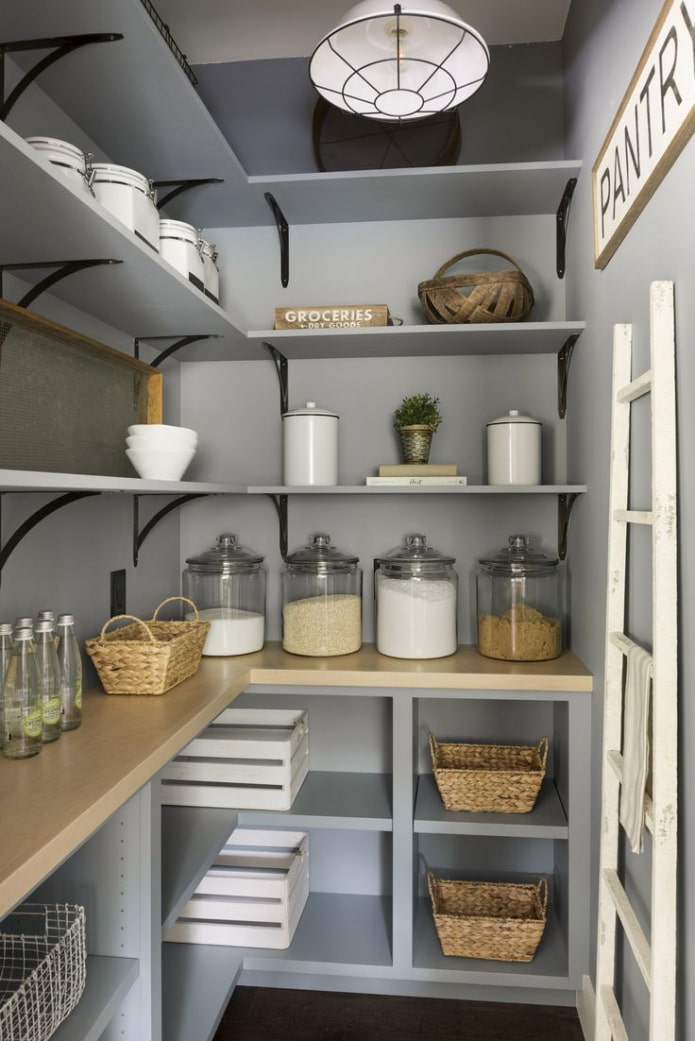
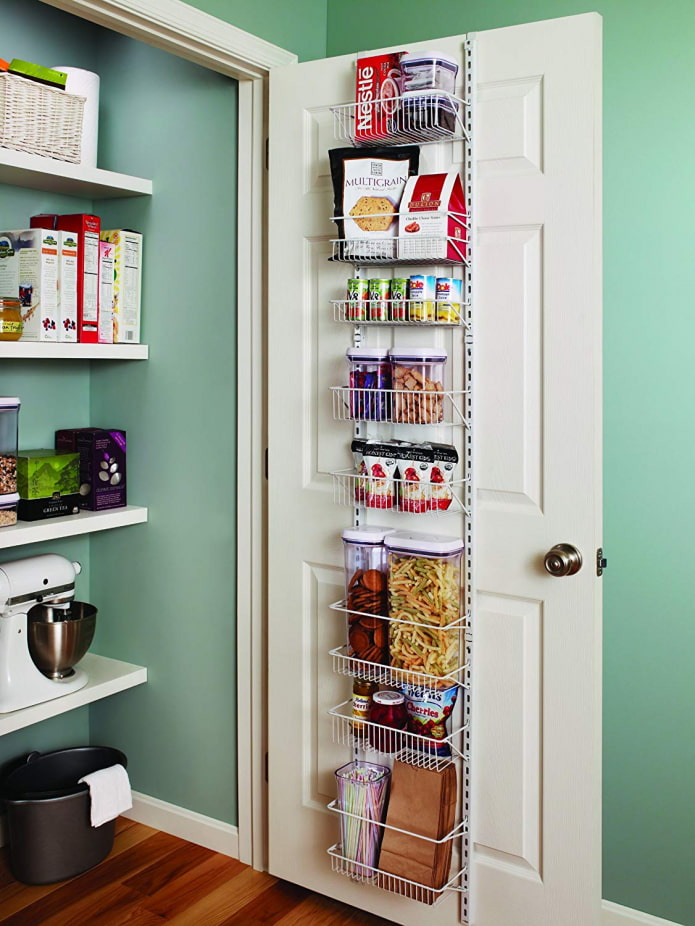
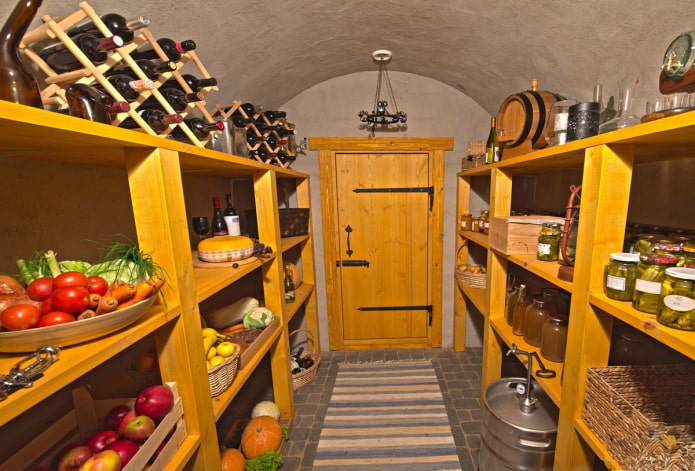
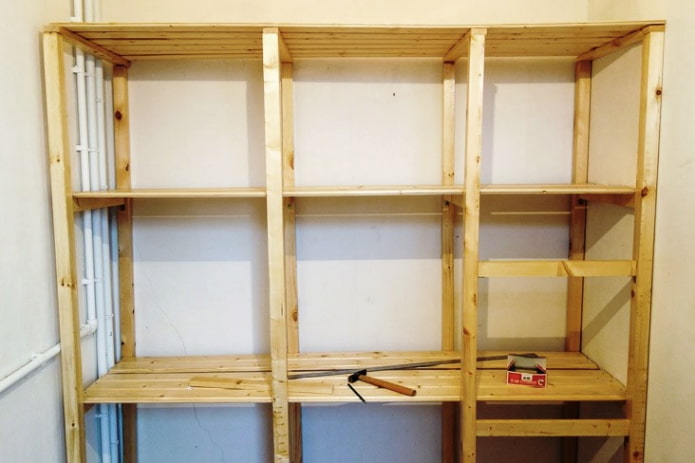
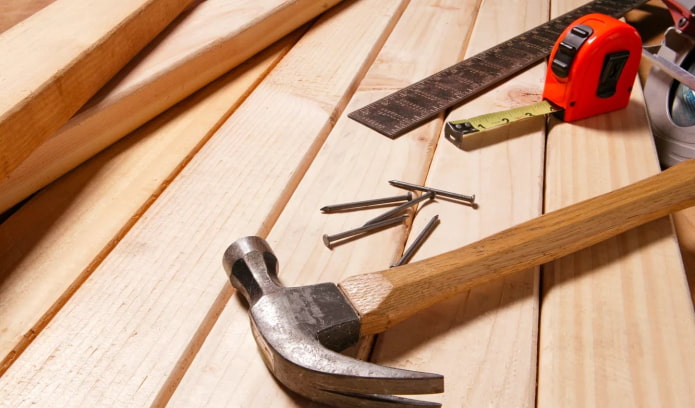
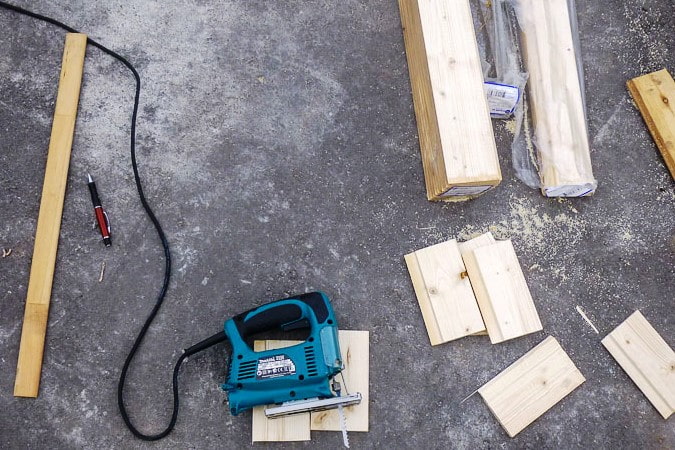
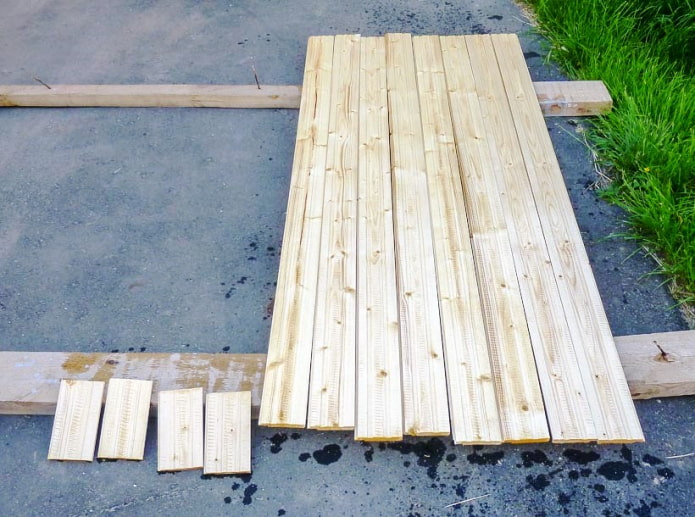
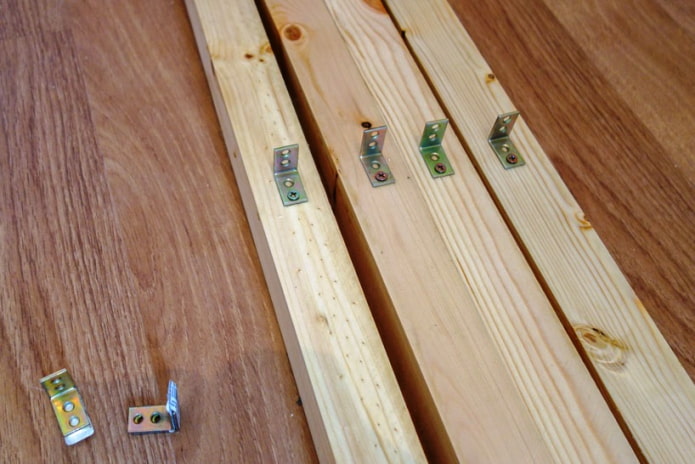
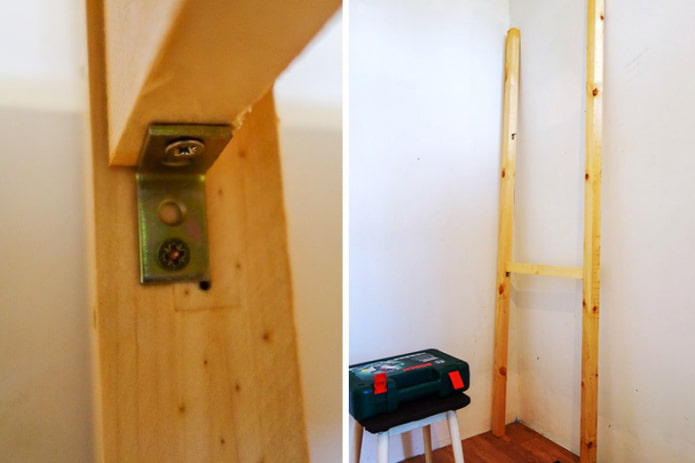
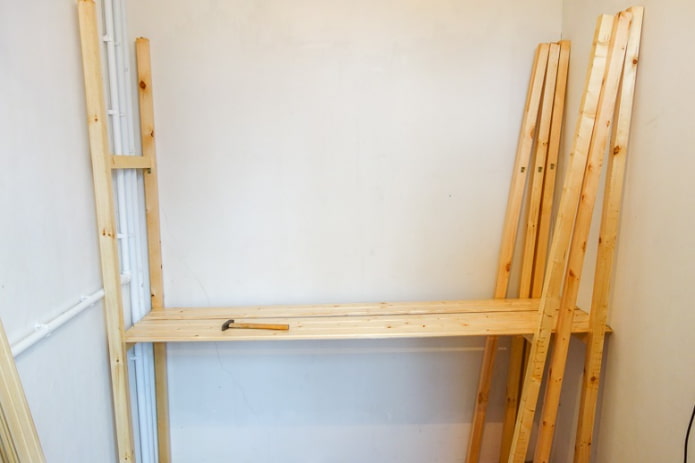
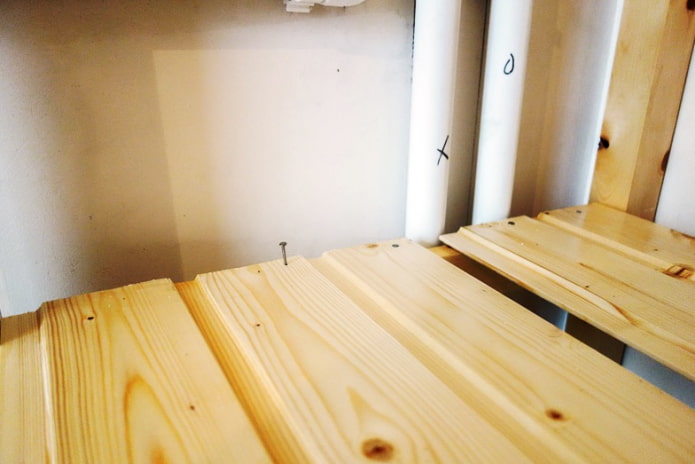
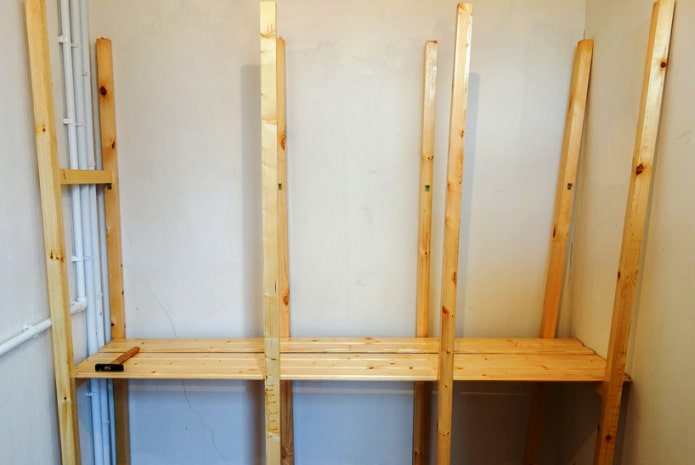
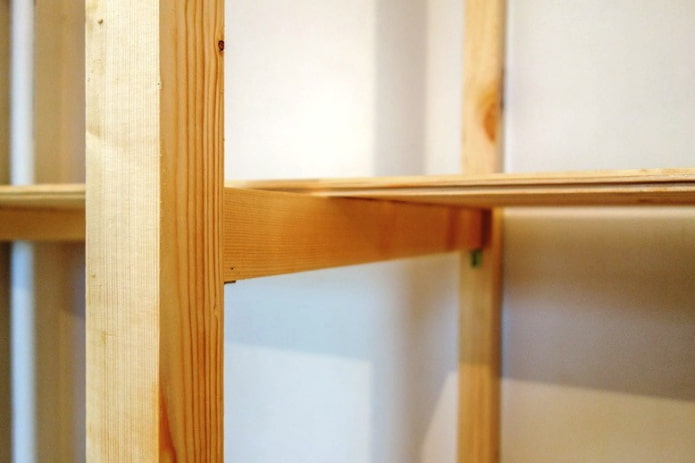
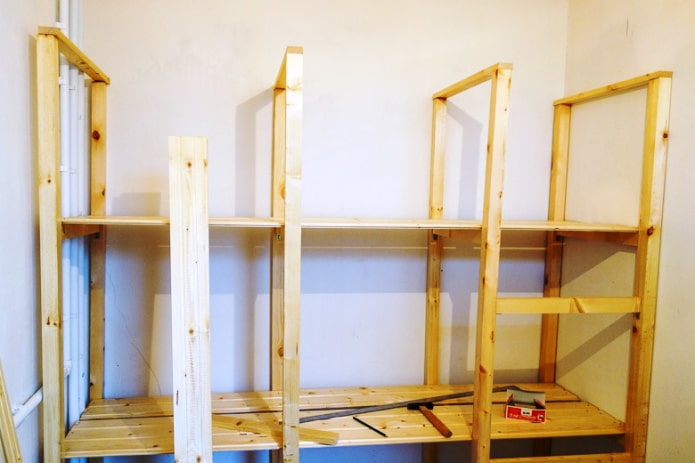

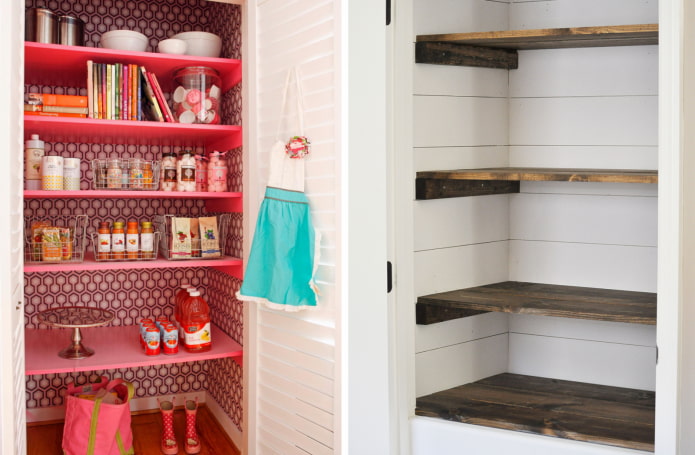
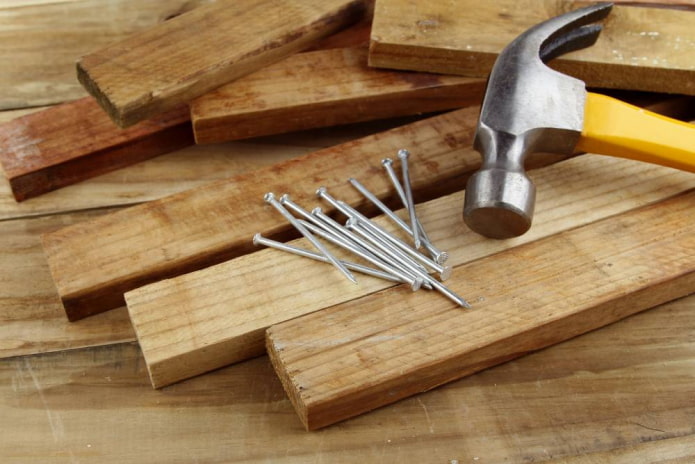
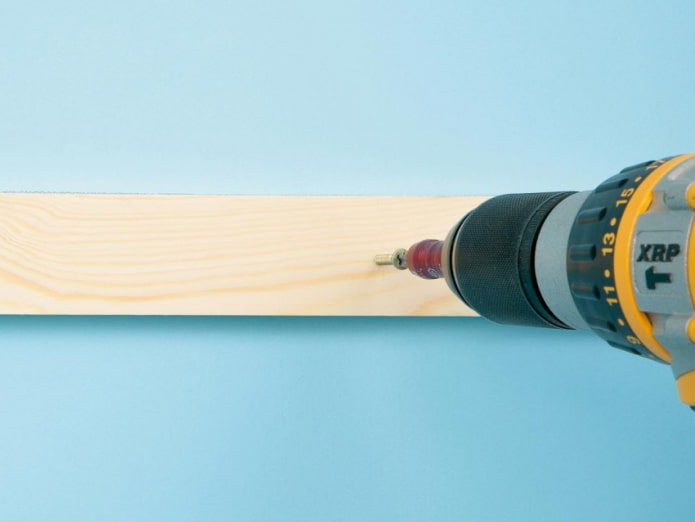


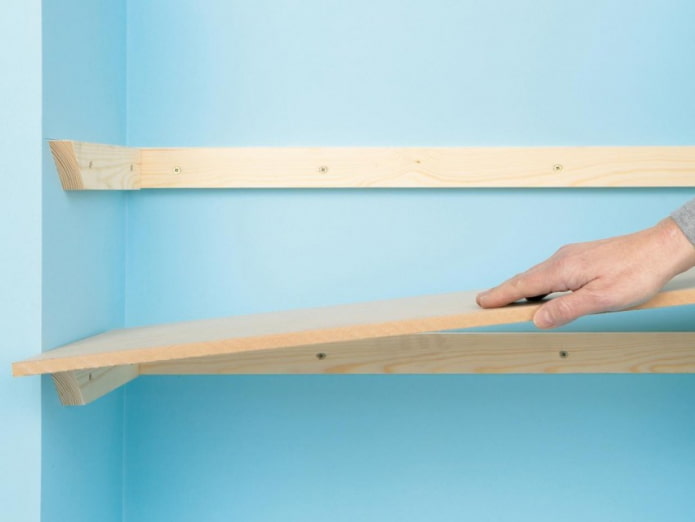
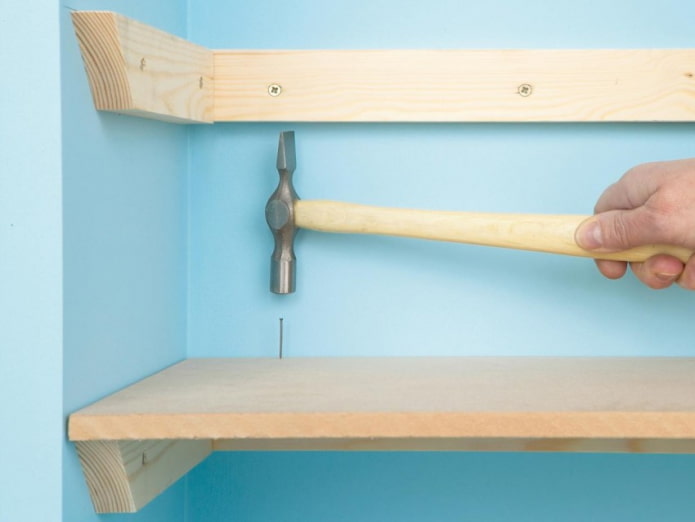
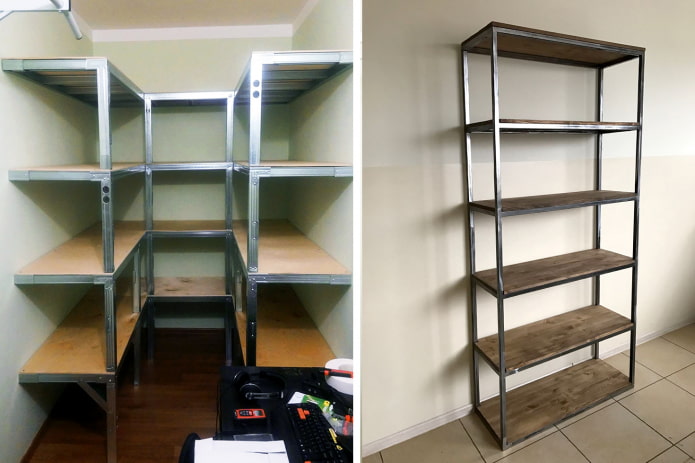

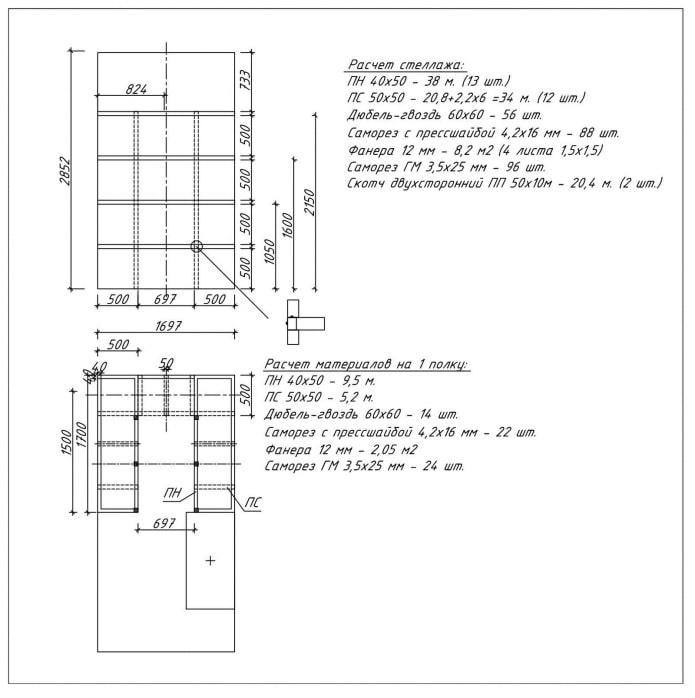
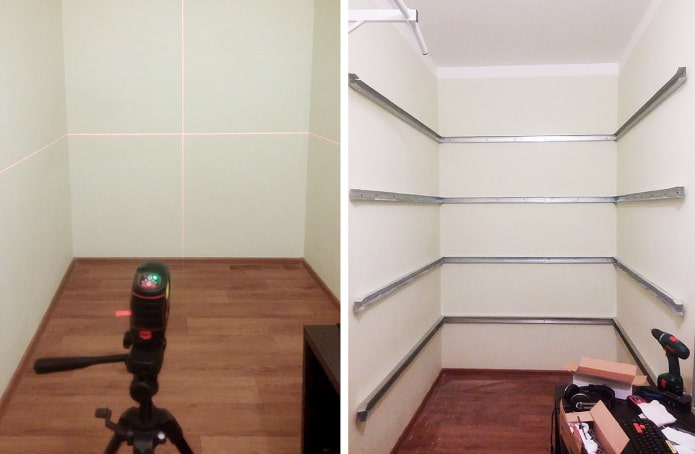

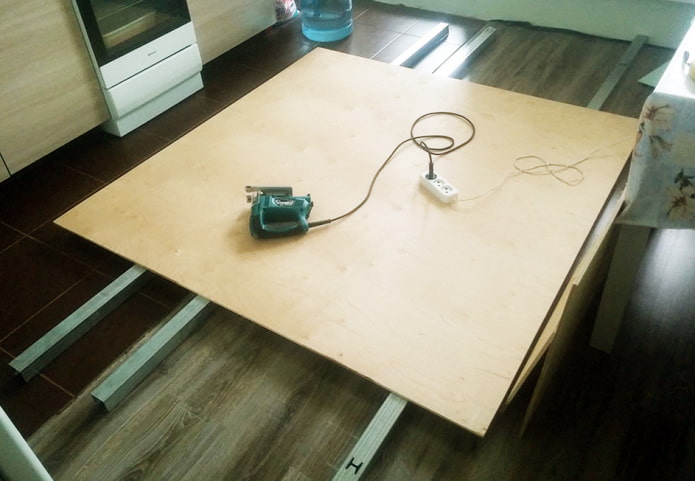
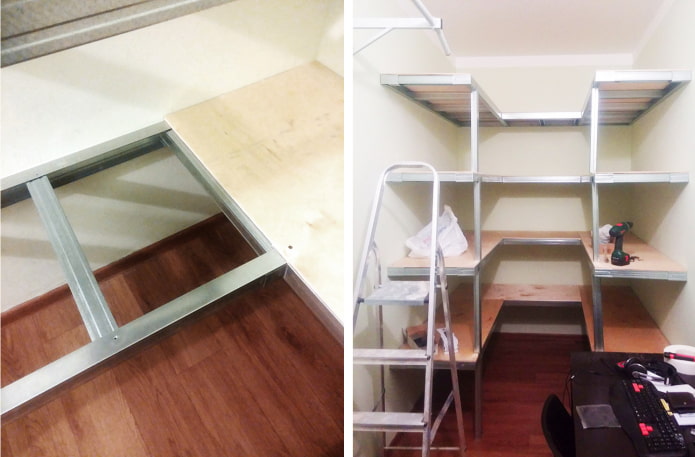
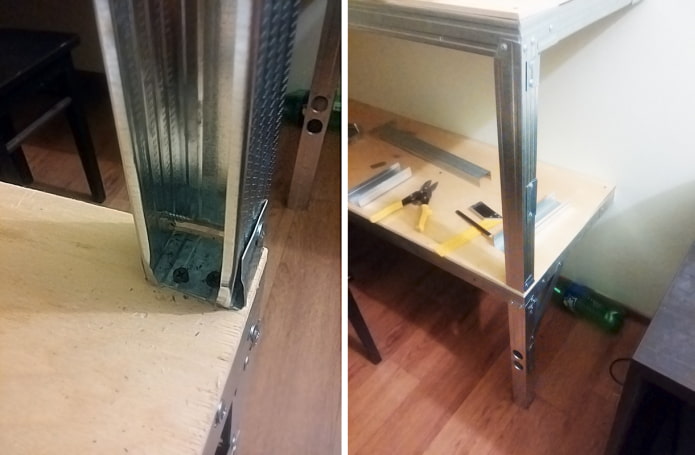
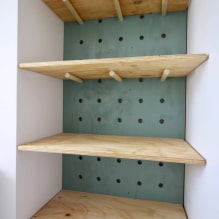
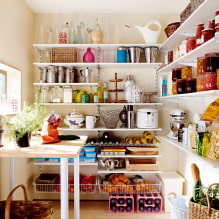
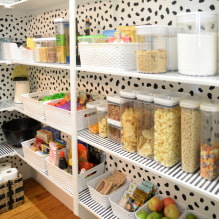
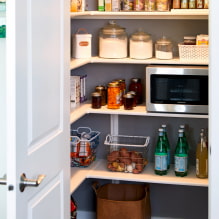

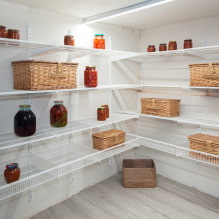

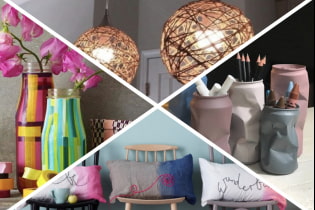 10 easy and simple ways to update your interior
10 easy and simple ways to update your interior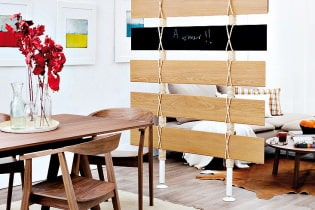 How to make a decorative partition with your own hands?
How to make a decorative partition with your own hands?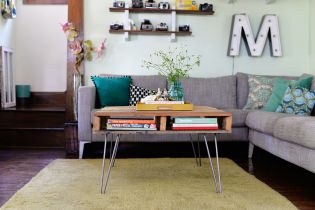 How to make a coffee table from pallets with your own hands?
How to make a coffee table from pallets with your own hands?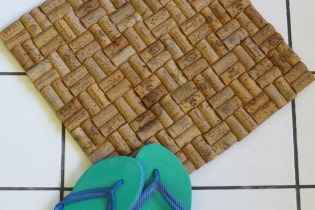 How to make a rug from bottle corks?
How to make a rug from bottle corks?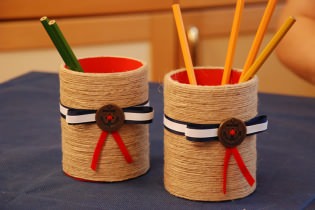 How to make a do-it-yourself pencil holder out of cardboard?
How to make a do-it-yourself pencil holder out of cardboard?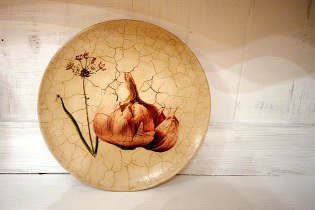 Decoupage plates with craquelure
Decoupage plates with craquelure